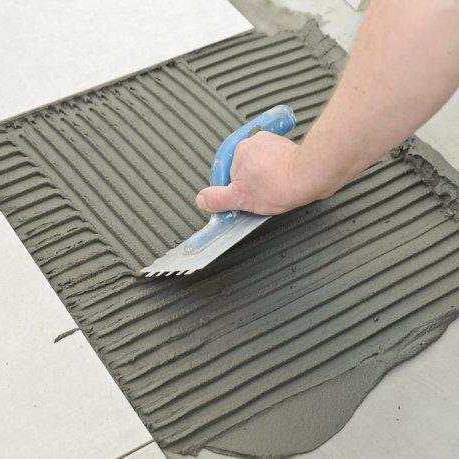
Oct . 11, 2025 10:25 Back to list
Mortar Bonding Agent | Strong Grip, Waterproof, Anti-Crack
EIFS Bonding Mortar Additive: the field notes, the specs, and the real story
If you’ve ever tried to get old concrete and new render to play nicely, you already know the magic (and the misery). A good mortar bonding agent can turn a borderline substrate into a dependable base for EIFS, veneer, or patching layers. The product I’ve been watching is EIFS BONDING MORTAR ADDITIVE from Shijiazhuang, Hebei—launched back in 2019, yes, but quietly improved since. To be honest, adoption has accelerated lately as façade retrofits surge and contractors chase longer warranties with fewer callbacks.
Industry trend check
Three currents define 2025 practice: polymer-modified cement systems, low-VOC formulations, and verified adhesion under freeze–thaw. Specifiers increasingly call out EN 1542 pull-off values, ETAG/ETICS protocols, and ASTM test data in the same paragraph. It seems that buyers want numbers they can show an inspector and a superintendent—ideally both.

Origin: NO.1 BUILDING, TECHNOLOGY CERTER, HIGH-TECH ZONE, SHIJIAZHUANG CITY, HEBEI PROVINCE, CHINA. Product type: Mixture for exclusive usage. Time: 2019-09-18 03:57:48.
Technical specifications (typical)
| Parameter | Typical value ≈ | Standard / method |
|---|---|---|
| Base chemistry | Redispersible polymer powder blend (EVA/VA-E) + additives | Internal spec |
| Appearance | Free-flowing, off-white powder | Visual |
| Recommended dosage | ≈ 3–8% of cement weight | Jobsite optimized |
| Pull-off bond (28 d) | ≈ 1.5–2.5 MPa | EN 1542 |
| Water retention | ≥ 95% | ASTM C1506 |
| Open time | around 20–30 min | EN 1346 |
| Compressive strength | ≈ 25–35 MPa | EN 196-1 (modified) |
| VOC content | ≤ 10 g/L | ISO 11890-2 |
| Shelf life | 12 months (dry, sealed) | Manufacturer spec |
Values from internal lab data; real-world use may vary with local cement, sand, and weather.
Process flow: how pros deploy it
- Materials: Portland cement, graded sand, water, EIFS BONDING MORTAR ADDITIVE (mortar bonding agent), clean tools.
- Substrate prep: CSP 3–5 profile, remove laitance; moisture SSD but surface dry.
- Mixing: Dry blend additive with cement:sand (1:3) → add water to achievable slump; rest 3–5 min; re-mix.
- Application: Bond coat 1–2 mm; while tacky, place base mortar and mesh; avoid full evaporation.
- Testing: Field pull-off per EN 1542 or ASTM C1583; minimum ≈ 1.0 MPa on representative spots.
- Service life: ≈ 20–25 years in EIFS when designed per ETAG 004 rules and maintained.
- Industries: EIFS/ETICS, precast repair, façade re-skin, tile/render overlays, civil patching.
Why contractors keep it on the truck
- Reliable adhesion on marginal concrete and old render—many customers say “less pop-offs after winter.”
- Extended open time and higher water retention; crews get a calmer pace on hot days.
- Low odor/low VOC; facilities teams appreciate it for interior work.
Vendor comparison (snapshot)
| Vendor | Certs / testing | Customization | Lead time ≈ |
|---|---|---|---|
| CNJZ Chemical (EIFS BONDING MORTAR ADDITIVE) | ISO 9001; third-party tests to EN 1542, ETAG 004 protocols | Polymer ratio, set profile, anti-sag package | 2–4 weeks |
| Generic Importer | Basic COA; limited adhesion data | Minimal | 5–7 weeks |
| Regional Blender | Local lab reports; variable standards | Color/fiber tweaks | 1–3 weeks |
Customization and compliance
For system owners, dialing polymer content and rheology is where the wins are. I guess the sweet spot is enough polymer to resist freeze–thaw without choking breathability. Ask for data mapped to EN 1542, ASTM C1583 (pull-off), and ETAG 004 (ETICS) verification. Low-VOC declarations and ISO 9001/14001 are becoming bid requirements.
Field notes (mini case studies)
- Cold-climate EIFS rehab, 6,800 m²: with the mortar bonding agent, pull-off averaged 2.1 MPa after 50 freeze–thaw cycles; zero mesh print-through reported at 12 months.
- Hospital corridor overlay: crews liked the workable open time; facilities team noted “no lingering odor,” which, surprisingly, helped weekend scheduling.
Note: Always run a small-site mockup; substrates are moody, and the inspector’s hammer is unforgiving.
Citations
- EN 1542: Products and systems for the protection and repair of concrete structures — Pull-off test.
- ETAG 004 / EAD 040083-00-0404: External Thermal Insulation Composite Systems (ETICS).
- ASTM C1583: Tensile Strength of Concrete Surfaces and the Bond Strength of Repair Materials.
- ASTM C1506: Water Retention of Mortars.
- ISO 11890-2: Determination of VOC content.
-
Cellulose Ether | High Purity, Fast Hydration, Stable Flow
NewsNov.17,2025
-
Cellosize HEC Thickener – High Purity, Fast-Dissolving
NewsNov.17,2025
-
Cellulose Ether: High-Purity Liquid Thickener, HEC Cellulose
NewsNov.17,2025
-
VAE Powder (RDP): High Adhesion & Flexibility for Mortars
NewsNov.17,2025
-
Cellulose Ether: High Purity, Fast-Dissolving, Stable Flow
NewsNov.17,2025
-
Cellosize HEC Thickener – High Purity, Fast-Dissolving
NewsNov.11,2025







